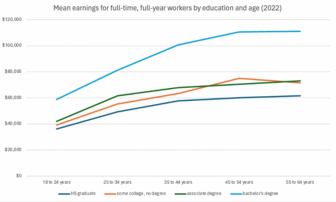So I was reading, not for work, a New York Times article on the architecture of Columbus, Indiana when I came across this: It was, in fact, J. Irwin Miller, scion of the Irwin-Miller family and arts patron, who transformed Columbus into an architectural mecca. As head of the Cummins Engine Company for 30 years, Mr. Miller reasoned that extraordinary buildings would help Cummins lure top talent to the rural Midwest. (Emphasis added.)
All of sudden, I was reading it for work. In the 1950s the CEO of the Cummins Engine Company in a small southern Indiana town understood, what we are still having trouble understanding today in Michigan, that place matters. That quality of place is key to attracting the talent that is essential to successful enterprises and local economies. Miller thought it a good investment for his company and community to commission such noted architects as Eliel Saarinen, Eero Saarinen, I. M. Pei, Harry Weese, Robert A. M. Stern, Richard Meier, Kevin Roche, Robert Venturi and Cesar Pelli. Pretty amazing!
What was important in the Fifties is almost certainly more important today. Mobile talent –– particularly young –– value  quality of place in choosing where they live and work after college. Quality of place isn’t something you do after you grow the economy and have more resources to do the extras. It is one of the essentials that you do to grow the economy. The arts and culture –– including architecture and reusing old buildings –– matter. So do outdoor recreation and parks. Maybe most important is big city walkable, high density, mixed-use neighborhoods tied together by transit.
quality of place in choosing where they live and work after college. Quality of place isn’t something you do after you grow the economy and have more resources to do the extras. It is one of the essentials that you do to grow the economy. The arts and culture –– including architecture and reusing old buildings –– matter. So do outdoor recreation and parks. Maybe most important is big city walkable, high density, mixed-use neighborhoods tied together by transit.
Alan Ehrenhalt reports in The Great Inversion and the Future of the American City that political and business leadership in the South increasingly get it. He writes:
In the first decade of the new century, in cities all over the American South and Southwest, something puzzlingly happened. … leaders of these sprawl-based conurbations that have grown enormously in the past generation began to express deep longing for a downtown. … So it was in a remarkably few years, Phoenix and Dallas and Charlotte did things they would have been considered unthinkable a decade or two before. They spent billions of public dollars on light-rail transit systems; they drafted long-term ‘vision” documents that projected a future in which downtowns were friendly to pedestrians rather than automobiles; they won voter support for striking new public buildings and placed them as close to the center of the city as they could.
Why did they want those things? … the desire to recruit and retain big corporations, and the sense these companies were uneasy locating in a metropolis without a center. … This was a common refrain across the big Sun Belt cities. In the words of Michael Smith, Charlotte’s director of downtown development, the bankers who dominated the town’s economic strategy felt they had to have downtown amenities “to attract hip young professionals.” Virtually all of these Sun Belt cities agrees with the geographer Richard Florida that future prosperity depended on the ability to lure the “creative class,” and that this could be done only with a thriving urban culture. (Emphasis added.)
Michigan’s future success is in large part dependent on our political and, a larger portion of, business leadership understanding what Mr. Miller understood more than a half century ago and political and business leadership in most American big metropolitan areas understand today. That the models for future economic success in a flattening world are New York, Boston, Chicago, San Francisco, Seattle and Portland plus non costal cities like Minneapolis, Denver and Madison. That the path to future prosperity is increasingly talent driven and that to concentrate talent you need a big metropolitan area anchored by a vibrant central city with the quality of place increasingly mobile talent values.






